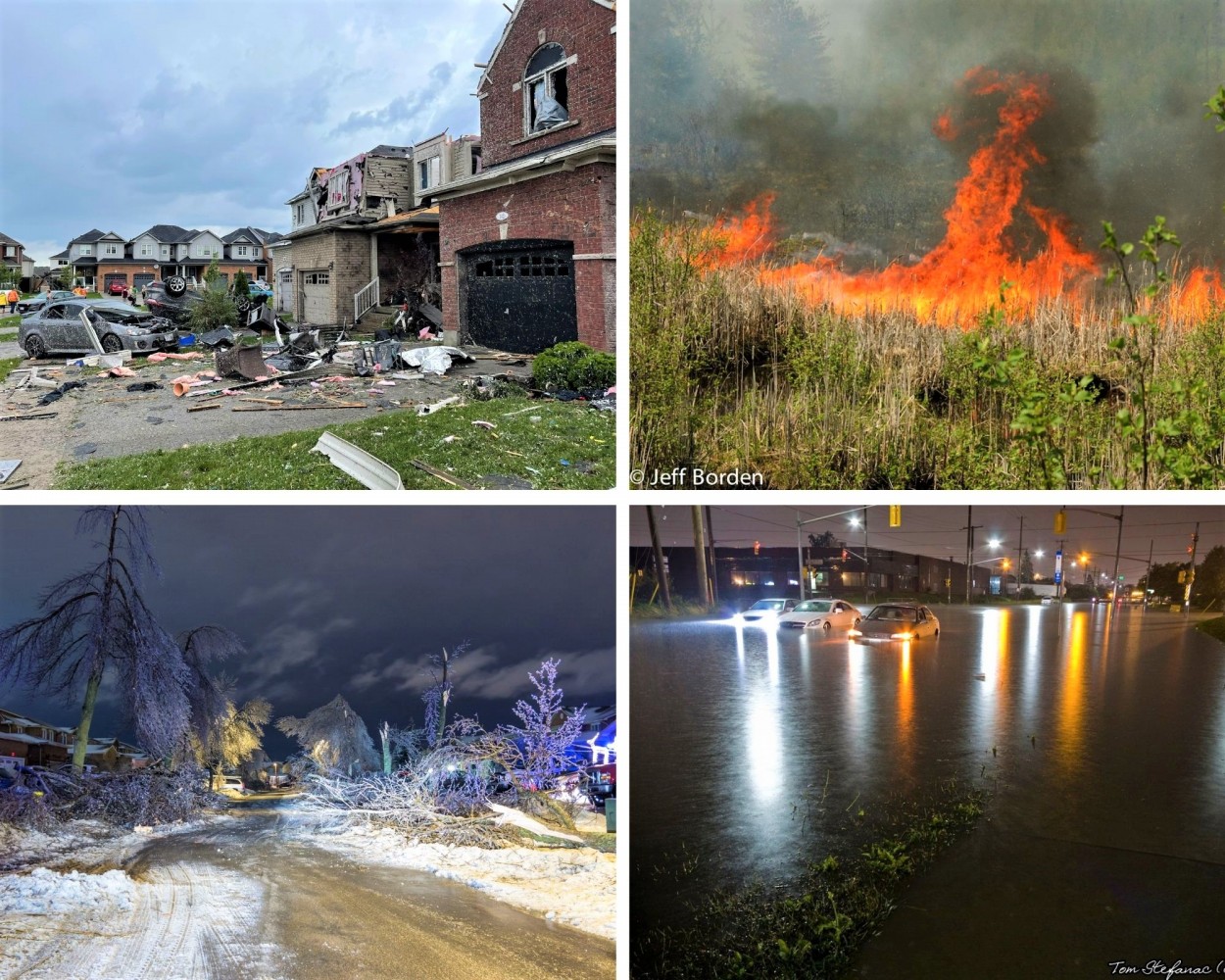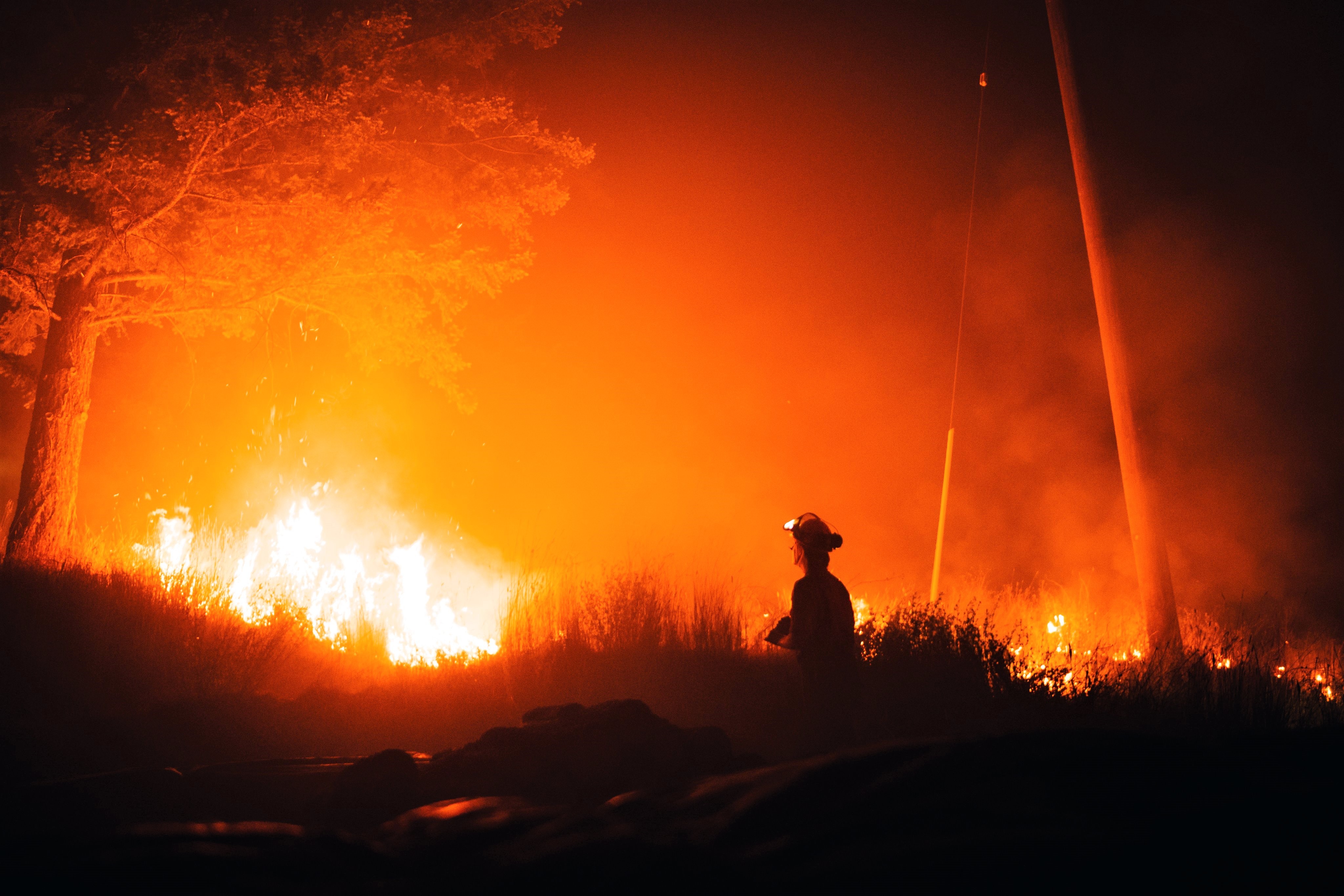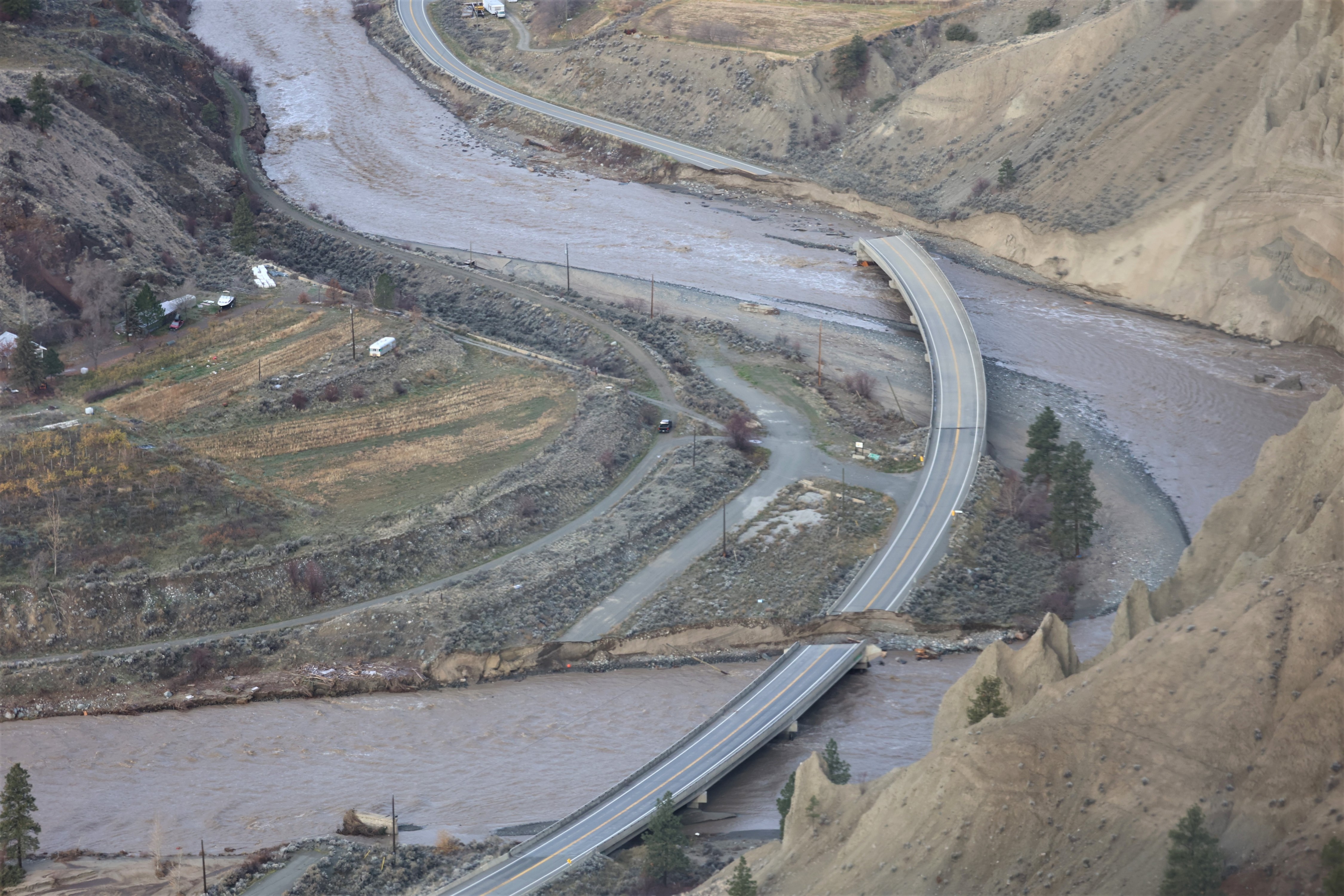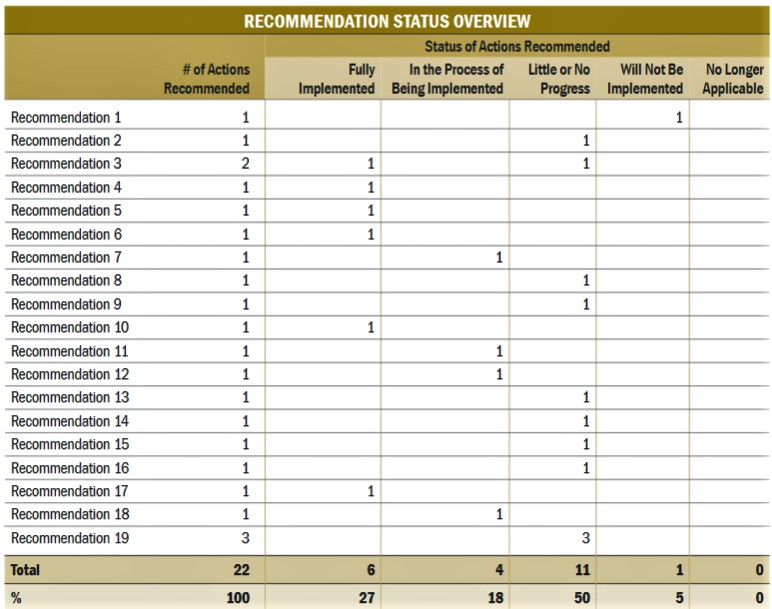
Brutal Auditor General report shows PC government ignoring environmental rights of residents
(Correction: Ontario's 2019 emissions decreased slightly from the 2018 level, by 0.2 megatonnes. The original version of this article stated emissions increased in 2019. The Pointer regrets the error in the editing process.)
The three levels of government that impact the lives of Canadians are like siblings.
The federal government is the eldest, the provinces the middle child and cities/regions are the youngest.
They are supposed to work interchangeably delivering policies and services to residents, but not without a dispute here or there.
It appears, when contemplating action to push back against the ominous impact of climate change, government officials look across all three levels to set the bar low for the reduction of greenhouse gas (GHG) emission targets.
The harrowing reports from environmental bodies around the world now coincide with real life illustrations in real time that prove what the scientists are saying: climate change is upon us. There is nothing to debate.
And the sure way to reduce the effects is by reducing carbon consumption.
The global thermometer has passed 1.5 degrees celsius above pre-industrial levels and continues to rise toward the point of no return, the 2-degree celsius tipping point into a place no one wants to go.
The lack of government action is sending us there, fast.
The most recent and devastating effects can be seen in British Columbia, after months of forest fires scorched the land in the summer, residents are now coping with another direct impact of increased carbon and temperature increase, as rainfall levels that once upon a time occurred once a century visit Earth like a biblical plague month after month after month, somewhere around the world.
Months after a heat dome crippled much of BC, the province declared a separate state of emergency because of mass flooding. The devastation twice in one year is likely the new normal, as climate scientists have modelled such extreme weather events that will be seen on a regular basis, forcing us to adapt to a planetary reality caused largely by human activity.


In July 2021, British Columbia declared a state of emergency because of forest fires; in November 2021 the province declared a second state of emergency because of mass flooding and mudslides.
(Photos B.C Ministry of Transportation and B.C Wildfire Service)
Peel Region is not immune to the effects of the rapidly heating planet. This past summer, there were multiple heat warnings issued. In an August 2021 report, Credit Valley Conservation Authority (CVC) said temperatures locally have increased 1.75 degrees celsius over the last 80 years. It also reported a decrease in the consistency and intensity of colder days.
The Intergovernmental Panel on Climate Change (IPCC) recently released another mind numbing report explaining how Earth is warming quicker than previously anticipated. Places like Canada with a colder climate will see the effects first.
Starting around 1950 the emission of carbon created by human consumption into the atmosphere began to overtake the capacity of natural absorption processes such as plant photosynthesis, and the early signs of human-caused warming were seen.
Scientists have measured and modelled and warned us ever since.
A reckoning of the destruction is now on almost everyone's radar and should empower officials to mitigate the growing issue for the safety and security of the future.
Over the past 30 years in Ontario, there have been different political entities in power, each contributing to inaction, and action, in their own way. Whether it was a new subdivision development in Caledon’s Mayfield West area, surrounded by farm fields and question marks about why town council would approve sprawl in the middle of rural Ontario, or the Dalton McGuinty Liberals abolishing the use of coal-fired power stations in the province, efforts have come in fits and starts.
But we are now at the point of no return.
The mass flooding, forest fires, heat waves, snowstorms and tornados are here to stay. Humans now have to adapt to the destruction we have created. There is no repairing much of the damage, but there is a potential to stop the thermometer from rising further.
Can local, provincial and federal officials work toward what should be an obvious common goal? Can best practices in other countries lead us toward a healthier planet?
What happens when governments don't act, or, even worse, act in ways that do even more damage, taking us way past the point of no return?
In Ontario this is the reality we face.
The province’s Auditor General, Bonnie Lysyk, released reports on how Premier Doug Ford’s government is handling climate change and the environment.
News flash, it is despicable.
“[T]he Environment Ministry fully met just 18% of our criteria, and the former Natural Resources Ministry, the former Ministry of Energy, Northern Development and Mines and the Municipal Affairs Ministry each fully met 45% of our criteria,” the Auditor General wrote, regarding compliance with the Environmental Bill of Rights.
In hundreds of pages Lysyk laid out the mismanagement, secrecy and utter lack of regard for legislation and existing policy.
“Environmentally significant decisions are being made either by ministries that are not subject to the Act or under laws that are not subject to the Act. As a result, Ontarians do not have any EBR Act rights in relation to those decisions. We found that these issues, and other issues described in this report, stem at least in part from a lack of leadership from the Environment Ministry, which administers the EBR Act, and from a failure by individual prescribed ministries to prioritize their compliance with and implementation of the EBR Act. These findings point to a lack of commitment by prescribed ministries to not only meet the EBR Act’s requirements in a technical way, but also consistently meet those requirements in a manner that achieves the purposes of the Act and respects Ontarians’ rights.”
The impacts across Ontario and in Peel are profound.
“Of particular concern, ministries are not notifying and consulting Ontarians about all of the environmentally significant decisions that they should be,” Lysyk wrote in her report on the province’s Environmental Bill of Rights. “Some ministries have deliberately avoided consulting the public about some proposals.”
Over the pandemic, consultations for development applications and other potentially damaging moves have been done in a virtual format, allowing ministries to manipulate and have more control over the process, often blatantly subverting public oversight.
One item most governments have in common is aspirational GHG emission targets to confront the warming of our world. The Region, Peel’s two largest cities, along with the Province and federal government have goals to decrease emissions. To do this, each must be on the same page and work collaboratively to prevent further catastrophes.
Current emissions under the Ford PCs continue to rise after a long period of reductions. Not including 2020 which was an outlier year due to the pandemic, the numbers have not gone in the right direction under the current government. In 2019, GHG emissions were 163 megatonnes, which was 22.4 percent of the Canadian total, and only a very small decrease of 0.2 megatonnes from the prior year. Ontario residents on average emitted 11 tonnes of GHGs per person in 2018, almost twice the world average.
The Greater Toronto Hamilton Area (GTHA) represents 44 percent of provincial emissions according to The Atmospheric Fund (TAF). The newest modelling coming out mid-December is expected to show the Region contributed 10 megatonnes of CO2 in 2020. Toronto had the lowest emissions per capita in the GTHA. Peel’s residential units contributed the most, per capita, to overall carbon emission, largely due to the widespread use of natural gas for heating.
The Auditor General has made it clear, the provincial government is actively hiding and preventing public input on massive projects that will alter the lives of Ontarians. The government has made very little progress on 50 percent of the GHG reductions recommendations by the Standing Committee on Public Accounts, responsible for ensuring the government is being transparent and engaging residents on issues of concern.
In 2020 the committee reviewed Preserving and Protecting our Environment for Future Generations: A Made-in-Ontario Environment Plan and made 19 recommendations consisting of 22 actions. This required the Ministry of the Environment, Conservation and Parks to report back a year later to follow up on the audit.

Ontario has yet to implement 50 percent of the action items recommended.
(Ontario Auditor General)
As enshrined in the Environmental Bill of Rights (1993) the provincial government needs to protect, conserve and restore nature and protect the rights of Ontarians in regard to a healthy environment. The committee’s job is to make sure accessibility of key provincial legislation is transparent for the public and that necessary plans are effective and work toward lowering GHG emissions.
Since the committee report, six actions have been implemented, four are in the process and 12 have no progress or won’t be implemented. Some of the recommendations have to do with public accountability and inaccurate information regarding the process of achieving Ontario’s target GHG emissions.
The Plan assumes how the province can decrease emissions over the next decade. The modelling presented indicates that if the government does not take any further reduction actions while economic growth continues at the current pace, emissions would increase by 0.1 megatonnes from 2018 to 2030. This prediction is called the “business-as-usual forecast” and is critically important as a base for further reduction efforts.
But the Auditor General reviewed the government’s numbers for this status quo scenario and found the projections and reductions targets stated are “not yet supported by sound evidence.”
The specifics of the inaccurate information lie in errors the Province made while implementing modelling data into its scenario. One of the examples the Auditor General highlighted is how the estimate counts certain emission reduction targets more than once, leading to an inaccurate number used for expected reductions.
Another flawed prediction for reductions involves excessively exaggerated estimates for electric vehicle sales in Ontario, even though the government killed subsidies for these vehicles which crippled sales, as they dropped about 50 percent the year after the PCs cancelled the popular subsidy.
Another glaring problem is The Ministry of the Environment role under the PC government.
It has placed emission reduction initiatives in the control of other ministries and not the Ministry of the Environment, meaning the Climate Change Leadership Team has no capacity to implement a number of GHG emission reduction projects.
An expert panel was to be appointed to advise Ontario’s climate change plan. In 2019, ten members were appointed on a two-year term to the Climate Change Advisory Panel, but, oddly, the mandate they work under does not include providing advice on plans to reduce GHG emissions.
The panel was to provide the Environment Ministry with a report on its progress annually which was supposed to be readily available to the public.
“The ministry has advised us that the report is available to the public upon request,” the Auditor General wrote, raising questions as to why it was not maintained in the public domain.
Lysyk also mentions a separate report from the committee on infrastructure and homes, which was supposed to be available for November 2021. The Pointer asked the ministry if the document is available.
“The Minister is expecting to receive the report in the near future, and will then consider the recommendations,” a spokesperson for the Ministry of the Environment, said.
The lack of transparency by the Province sets the tone for municipalities.
Requests by some towns and cities to have zoning decisions made by the Province, subverting the local planning process, have jumped dramatically under the PC government.
Caledon, Brampton and Mississauga have all taken cues from Queen’s Park, forsaking the public planning process for the approach now being used routinely in Ontario, which allows developers to avoid public scrutiny.
Peel, like all other regions, is undertaking a Municipal Comprehensive Review (MCR) which is supposed to force the Region to plan it’s population growth for the next 30 years in an environmentally responsible way.
The PC government has already signalled to Hamilton that it does not support sustainable growth practices under the MCR, contrary to the very intention of the sustainable planning exercise, which was launched under previous Liberal governments.
The Planning Act mandates cities must take into consideration the needs of the housing market and also climate change. These two seemingly contradictory considerations both need to be part of growth plans for the future, but the Auditor General has raised deep concern about the public being entirely cut out of the local planning process.
“In July 2020, the Municipal Affairs Ministry proposed amendments to the Planning Act as part of the COVID-19 Economic Recovery Act, 2020 (Bill 197). The Municipal Affairs Ministry did not consult the public about these amendments,” Lysyk wrote.
“The amendments expanded the Minister’s powers with respect to Minister’s Zoning Orders. Minister’s Zoning Orders bypass local planning authorities and requirements for public consultation and appeal rights. Our Office wrote to the Municipal Affairs Ministry prior to third reading of Bill 197 stating that the proposed changes were environmentally significant and that, as a prescribed ministry under the EBR Act, it was required to post a notice of the proposed changes and consult the public through the Environmental Registry. The Ministry did not do so.”
Inaction by the Ford government and its obstruction of environmental rights are coming to light as more questions are being raised about the federal government’s commitment to confront climate change.
In an equally damning report by the federal environment and sustainable development commissioner, Jerry V. DeMarco, who works under the country’s Auditor General, he points out Canada is now the worst emitter of the G7 nations since the Paris Agreement in 2015.
DeMarco, Ontario’s former assistant auditor general, and his team were looking at what Canada has done to reduce GHG emissions to showcase shortfalls and figure out if there is time to turn things around. In April, Prime Minister Justin Trudeau committed to reducing the country’s emissions 40 to 45 percent below 2005 levels by 2030, the previous target was 30 percent below 2005 levels.
“Despite a series of commitments and accompanying plans, policies, and measures, Canada’s greenhouse gas emissions have thus far not been on a downward trajectory,” the report reads.
Instead of reducing emissions, the country saw an increase by 21 percent between 1990 and 2019. One of the main reasons is the continued economic reliance on the oil and gas sector, which contributes just eight percent to Canada’s GDP but accounts for a quarter of the country’s emissions.
The transition away from the oil and gas sector needs to happen, but environmental groups calling for the change say it needs to happen fairly, so workers are not crippled. TAF recommends governments fund training for jobs in the green economy so the burden of re-education does not fall on employees.
The green economy is booming around the world, as investments in zero-emission technologies and cleaner energy are now being backed by more and more equity from institutional markets and capital flows into these ventures from all corners of the globe including huge state players such as China. The benefit of a clean economy will not only reward our planet, it will make a lot of countries even richer.
Canada, currently, is losing this race and the new report points out many of the failures by previous governments and the Trudeau Liberals.
Research by the Global Commission on the Economy and Climate, an international consortium of experts from the corporate sector, academia, government and various fields of economics, shows the transition away from carbon will be worth $26 trillion in economic benefits to the end of 2030, including the creation of more than 65 million low-carbon jobs.
Ontario, as the Auditor General clearly highlighted, is further behind than ever in recognizing the potential of a green economy. Meanwhile, the exclusion of the public from key planning decisions and the stripping away of environmental rights raises more questions about what the province will look like in the not too distant future.
Which side of history will all three levels of government stand on?
Email: natasha.o[email protected]
Twitter: @taasha__15
COVID-19 is impacting all Canadians. At a time when vital public information is needed by everyone, The Pointer has taken down our paywall on all stories relating to the pandemic and those of public interest to ensure every resident of Brampton and Mississauga has access to the facts. For those who are able, we encourage you to consider a subscription. This will help us report on important public interest issues the community needs to know about now more than ever. You can register for a 30-day free trial HERE. Thereafter, The Pointer will charge $10 a month and you can cancel any time right on the website. Thank you
Submit a correction about this story


